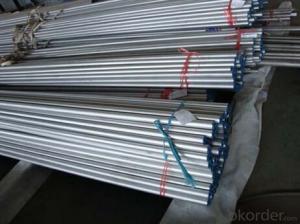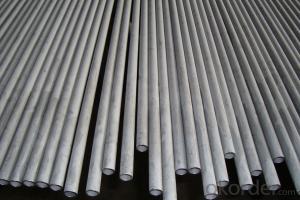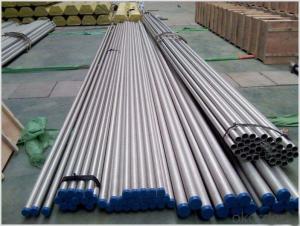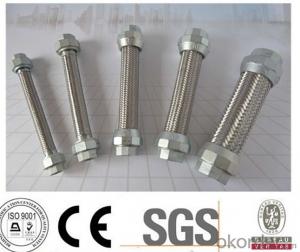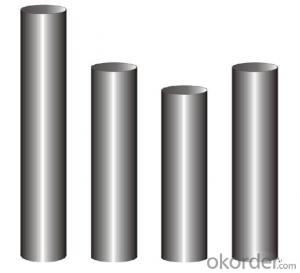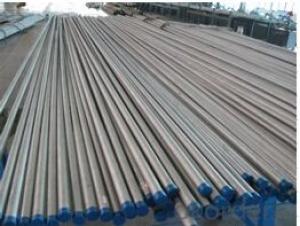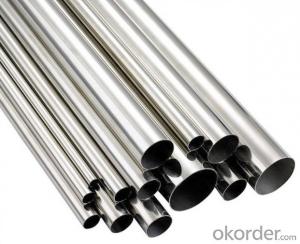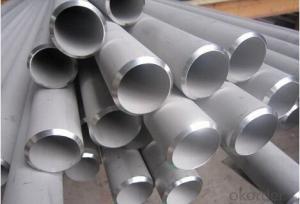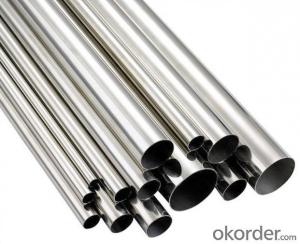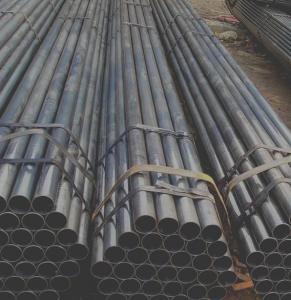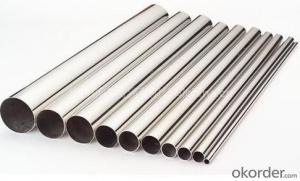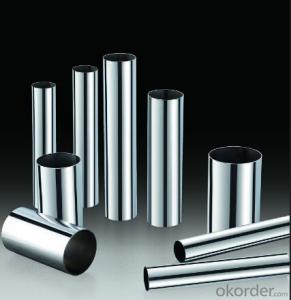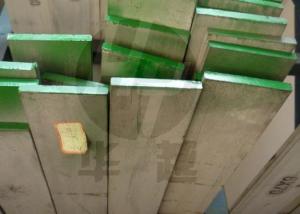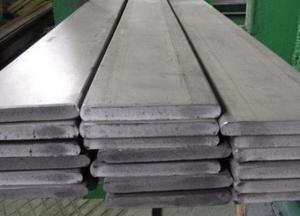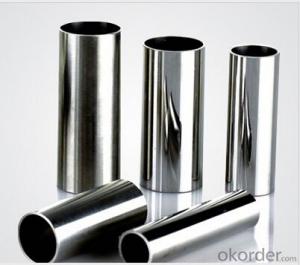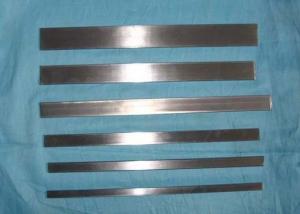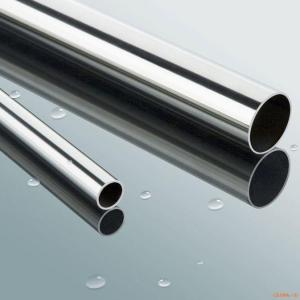Boiler Heat Exchange Stainless Steel Pipe 31803 ASTM A213
- Loading Port:
- Ningbo
- Payment Terms:
- TT OR LC
- Min Order Qty:
- 1 m.t.
- Supply Capability:
- 5000 m.t./month
OKorder Service Pledge
OKorder Financial Service
You Might Also Like
1、Structure of Boiler Heat Exchange Stainless Steel Pipe 31803 ASTM A213 Description:
Boiler Heat Exchange stainless steel pipe is often used in the heating system. Heating system, or those stored energy (such as solar energy) in the form of heat, need to be built with the material that can withstand temperatures up to 550 degrees Celsius. High chromium molybdenum welded steel pipe can work in the extreme, which maintain as the ideal material for the construction of power station.
2、Main Features of Boiler Heat Exchange Stainless Steel Pipe 31803 ASTM A213:
• High manufacturing accuracy
• High strength
• Small inertia resistance
• Strong heat dissipation ability
• Good visual effect
•Reasonable price
3、Boiler Heat Exchange Stainless Steel Pipe 31803 ASTM A213 Images:
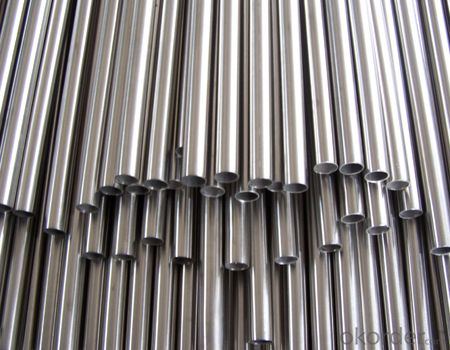
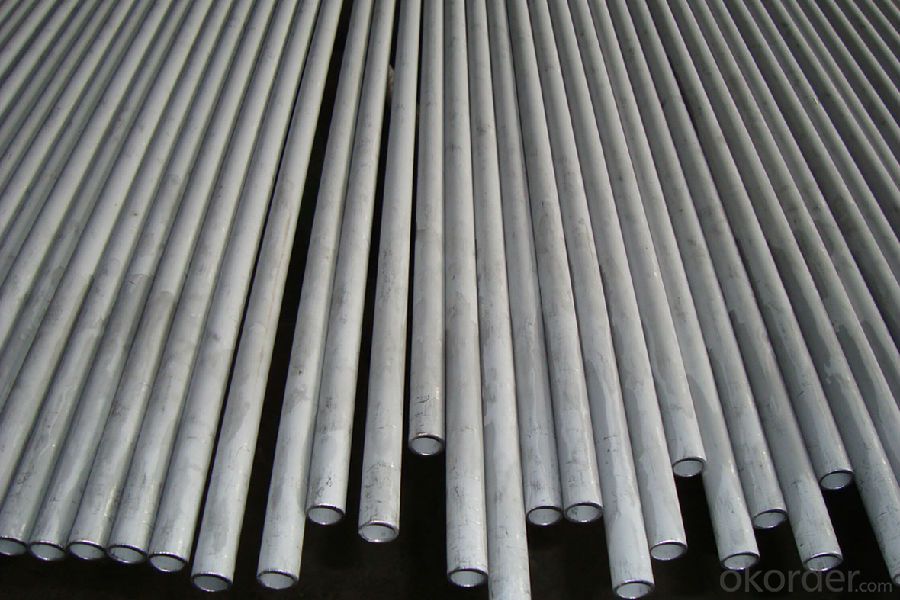
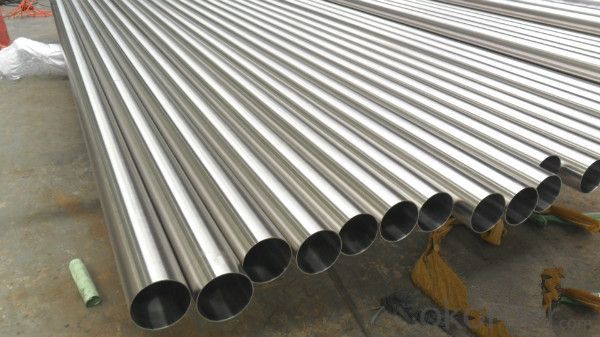
4、Boiler Heat Exchange Stainless Steel Pipe 31803 ASTM A213 Specification:
1)Commodity: heat exchanger pipe
2))Material: 304,316L,304L,316,321,310S,etc
3)Thickness:0.5-100mm
4)Length: 1-14m
| Material Grade | 304,304L,316 ,316L,321,310S,2205,904and so on. |
| Standard | ASTM A312, A554, A249, A269 and A270,ect |
| DIN 17456-85 , DIN 17458-85, DIN 17459-92,ect | |
| JIS G3446-1994, JIS G3448-1997, JIS G3459-1997, JIS G3463-1994,ect | |
| GB13296-1991, GB14975-2002, GB14976-2002,ect | |
| Outer Diameter | 13.7-2020mm |
| Thickness | 0.5-50mm |
| Length | 1m -12m or as customers' request |
| Polish | 180G, 320G, 400G Satin / Hairline |
| 400G, 500G, 600G or 800G Mirror finish | |
| Test | eddy current inspection, ultrasonic inspection, X-ray inspection, real-time imaging, hydrostatic test, spectral analysis, intergranular corrosion, water pressure test, and mechanical property testing facilities. |
| Payment | 1) by L/C at sight, |
| 2) 30% deposit, 70% balance before Shipping. | |
| Delivery time | A.7 days if this goods is stock goods. |
| B.25 days if this goods will be produced after order | |
| Validity | Valid time is 3 days for price usually. |
| Payment terms | FOB QINGDAO |
| MOQ | 1 ton |
| Capacity | 1000 ton per month |
| Certificate | ISO, SGS, and third part inspection |
| Applications | the products are widely used in chemical industry, condenser pipe, heat exchanger, petroleum, shipping military, environment protection, high temperature resistant, low temperature resistant, corrosion resistant and so on. |
| packing details | 1) Wooden-box Package. 2) The Wooden Frame Packing. 3) Intertexture Cloth Packaging with the Iron Sheet Bonding and the Two Terminals Covered With Plastic Dome. |
5、FAQ of Boiler Heat Exchange Stainless Steel Pipe 31803 ASTM A213:
①How is the quality of your products?
Our products are manufactured strictly according to national and internaional standard, and we take a test on every pipe before delivered out. If you want see our quality certifications and all kinds of testing report, please just ask us for it.
Guaranteed: If products’ quality don’t accord to discription as we give or the promise before you place order, we promise 100% refund.
②How about price?
Yes, we are factory and be able to give you lowest price below market one, and we have a policy that “ for saving time and absolutely honest business attitude, we quote as lowest as possible for any customer, and discount can be given according to quantity”,if you like bargain and factory price is not low enough as you think, just don’t waste your time.Please trust the quotation we would give you, it is professional one.
③Why should you chose us?
Chose happens because of quality, then price, We can give you both.Additionally, we can also offer professional products inquiry, products knowledge train(for agents), smooth goods delivery, exellent customer solution proposals.Our service formula: good quality+good price+good service=customer’s trust
SGS test is available, customer inspection before shipping is welcome, third party inspection is no problem.
Any question, pls feel free to contact us !
- Q: Are stainless steel pipes suitable for automotive exhaust systems?
- Indeed, automotive exhaust systems benefit greatly from the use of stainless steel pipes. This material is highly favored in the industry due to its exceptional resistance to both corrosion and high temperatures. It is capable of enduring the challenging circumstances experienced by exhaust systems, including exposure to moisture, heat, and chemicals. Moreover, stainless steel pipes possess commendable strength and durability, enabling them to withstand the vibrations and pressure fluctuations inherent to these systems. Additionally, these pipes are renowned for their aesthetic appeal, elevating the overall appearance of the vehicle. In conclusion, stainless steel pipes offer a trustworthy and enduring solution for automotive exhaust systems.
- Q: What is the difference between annealed and pickled stainless steel pipes?
- The properties and appearance of both annealed stainless steel pipes and pickled stainless steel pipes are affected by different processes. To improve the ductility and toughness of the material, annealing involves heating the stainless steel pipes to a specific temperature and then slowly cooling them. This process helps to relieve internal stresses and make the pipes softer and more malleable. As a result, they are easier to work with during fabrication and installation with a smoother, more polished surface finish. On the other hand, pickling is a chemical process that eliminates surface impurities like oxides, scales, and rust from stainless steel pipes. It involves immersing the pipes in an acid solution, typically a mixture of nitric and hydrofluoric acid, which dissolves the impurities. The pickling process restores the corrosion resistance of the stainless steel and leaves a clean, bright, and uniform surface finish. In summary, the difference between annealed and pickled stainless steel pipes lies in the processes they undergo. Annealing enhances ductility and toughness, while pickling removes surface impurities and restores corrosion resistance. The choice between annealed and pickled stainless steel pipes depends on the specific requirements of the application, including desired mechanical properties and surface finish.
- Q: How can the inner walls of stainless steel tubes be polished?
- After polishing, because the surface oxide layer received damage, it is best to use acid solution surface passivation treatment, otherwise it is easy to rust.
- Q: What is the difference between seamless and high-frequency welded stainless steel pipes?
- The main difference between seamless and high-frequency welded stainless steel pipes lies in their manufacturing process. Seamless pipes are made by piercing a solid cylindrical billet of stainless steel and then rolling it into a pipe shape. This process ensures a smooth and continuous surface, resulting in a pipe with no welded seams. On the other hand, high-frequency welded pipes are created by using a high-frequency electrical current to melt the edges of stainless steel strips and then welding them together. The welded seams in high-frequency welded pipes may be visible and can affect the overall smoothness of the pipe's surface.
- Q: What is the welding procedure for stainless steel pipes?
- The welding procedure for stainless steel pipes typically involves a few key steps to ensure a strong and durable joint. Firstly, it is important to select the appropriate welding process for stainless steel, which is often Tungsten Inert Gas (TIG) welding due to its ability to produce clean and precise welds. Before beginning the welding process, the stainless steel pipes should be thoroughly cleaned to remove any contaminants, such as dirt, grease, or oxidation. This can be done using a degreasing agent or a stainless steel wire brush. Next, the pipes need to be properly aligned and fitted together. It is important to ensure that the gap between the pipes is even and consistent throughout the joint. This can be achieved by using clamps or tack welding to temporarily hold the pipes in place. Once the pipes are properly aligned, the TIG welding process can begin. This involves using a TIG torch to create an electric arc between a tungsten electrode and the stainless steel pipes. The arc generates intense heat, which melts the edges of the pipes and creates a fusion between the base metal and the filler material. During the welding process, it is crucial to maintain a stable arc length and control the welding speed to achieve a uniform weld bead. The use of a foot pedal or a remote control can help regulate the heat input and control the welding parameters. Throughout the welding process, it is important to protect the weld area from contamination. This can be done by using shielding gas, such as argon, to create an inert atmosphere around the weld zone. The shielding gas prevents the weld area from reacting with oxygen and other atmospheric elements, which could lead to defects in the weld. After completing the weld, it is recommended to perform post-weld cleaning and inspection. This involves removing any slag or spatter that may have formed during the welding process and visually inspecting the weld for any defects, such as cracks or discontinuities. In summary, the welding procedure for stainless steel pipes involves cleaning the pipes, aligning and fitting them together, TIG welding with proper arc length and welding speed, shielding the weld area with inert gas, and performing post-weld cleaning and inspection. Following these steps will ensure a strong and reliable weld joint for stainless steel pipes.
- Q: What are the common corrosion issues with stainless steel pipes?
- There are a few common corrosion issues that can occur with stainless steel pipes. One of the most common is called pitting corrosion, which is characterized by small pits or holes that form on the surface of the pipe. Pitting corrosion is often caused by exposure to chloride ions, which can come from substances like saltwater or certain types of cleaning agents. Another common corrosion issue is crevice corrosion, which occurs in the narrow gaps or crevices between the pipe and other surfaces. These gaps can trap moisture or other corrosive substances, leading to localized corrosion. Crevice corrosion is often seen in areas where the pipe is joined or in areas with poor ventilation. Stress corrosion cracking is another common problem with stainless steel pipes. It occurs when the material is exposed to a combination of tensile stress and a corrosive environment. This can cause cracks to develop in the pipe, which can lead to leaks or structural failure. Finally, galvanic corrosion is a common issue when stainless steel pipes are in contact with other metals. When two different types of metals are in contact in the presence of an electrolyte, such as water, a galvanic cell can form and cause corrosion. To prevent this, it is important to use appropriate insulation or isolation techniques when connecting stainless steel pipes to other metals. Overall, while stainless steel is known for its corrosion resistance, it is not completely immune to corrosion. Understanding these common corrosion issues and taking preventive measures can help ensure the longevity and reliability of stainless steel pipes.
- Q: Are stainless steel pipes resistant to UV radiation?
- Yes, stainless steel pipes are resistant to UV radiation. Stainless steel is known for its excellent corrosion resistance, and this includes resistance to the harmful effects of UV radiation. When exposed to UV radiation, stainless steel forms a passive oxide layer on the surface, which acts as a protective barrier against further damage. This oxide layer helps to prevent degradation, discoloration, and loss of mechanical properties that can occur when materials are exposed to UV radiation. Therefore, stainless steel pipes are a suitable choice for outdoor or exposed applications where they may be subjected to UV radiation.
- Q: Can stainless steel pipes be used for boiler tubes?
- Certainly, boiler tubes can indeed utilize stainless steel pipes. The utilization of stainless steel as a material for boiler tubes is quite prevalent owing to its remarkable resistance to corrosion, robustness, and ability to withstand high temperatures. These attributes render stainless steel pipes well-suited for managing steam under conditions of elevated pressure and temperature within boilers. Moreover, the resistance of stainless steel to scaling and oxidation further augments its appropriateness for boiler applications. All in all, stainless steel pipes prove to be a dependable and efficient option for boiler tubes.
- Q: Can stainless steel pipes be used for gas distribution?
- Yes, stainless steel pipes can be used for gas distribution. Stainless steel is a highly durable and corrosion-resistant material, making it suitable for transporting gas safely and efficiently.
- Q: Can stainless steel pipes be coated?
- Yes, stainless steel pipes can be coated. Coating stainless steel pipes can provide additional protection against corrosion, improve heat resistance, and offer aesthetic enhancements. Coatings such as epoxy, polyethylene, or fusion-bonded powder coatings are commonly used to protect stainless steel pipes in various industries and applications.
Send your message to us
Boiler Heat Exchange Stainless Steel Pipe 31803 ASTM A213
- Loading Port:
- Ningbo
- Payment Terms:
- TT OR LC
- Min Order Qty:
- 1 m.t.
- Supply Capability:
- 5000 m.t./month
OKorder Service Pledge
OKorder Financial Service
Similar products
Hot products
Hot Searches
Related keywords
